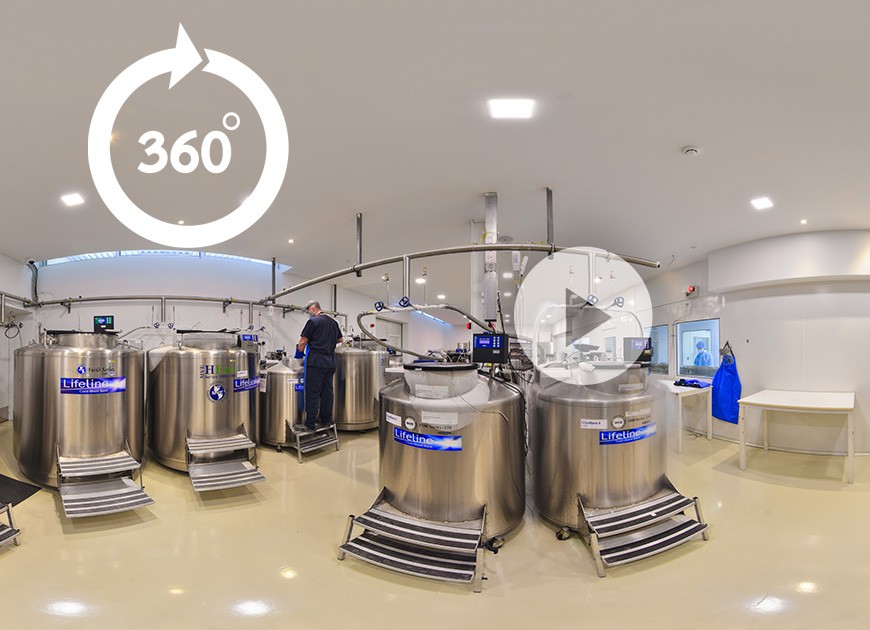Virtual Tour Of LifeLine (VR-360)

Scientists have succeeded in transforming human stem cells into functional lung and airway cells, thus giving way to the possibility of generating lung tissue for transplant using a patient’s own cells. The study by Columbia University Medical Center (CUMC) researchers has significant potential for modelling lung disease, screening drugs, studying human lung development, and, ultimately, generating lung tissue for transplantation.
The Earth is Calling announced their regenerative medicine therapy, a stem cell therapy using placental-derived tissue cells to promote healthy cell function and tissue repair.
The Earth is Calling announced their regenerative medicine therapy, a stem cell therapy using placental-derived tissue cells to promote healthy cell function and tissue repair.
In the therapy, the patient’s immune cells cultures with cord blood stem cells and returns only the ‘educated’ immune cells to the patient’s circulation.
The therapy is believed to provide benefits because abnormalities in multiple types of immune cells contribute to the autoimmunity in type1 diabetes and the insulin resistance in type 2 diabetes.
Umbilical cord blood can be used as a source of stem cells for people who need transplants, but do not have an appropriately matched family member or unrelated donor.
Duke researchers are investigating the ability of umbilical cord blood to treat a number of diseases, including autism.
Regenerative medicine is a rapidly developing, exciting field of medicine that seeks to regenerate (repair and/or replace) damaged tissue in the body with the use of your own adult stem cells.
Scientists from the University Hospital of Munich have managed to grow the beginnings of a human heart valve using the stem cells from cord blood.
Throughout history, healthcare has gradually transformed from a mystical art into a defined science. While there are still challenges to be faced, life-saving stem cell treatments are revolutionising the industry.
Regenerative medicine has the potential to provide innovative new therapies for people with lung diseases, including chronic obstructive pulmonary disease (COPD), pulmonary fibrosis, cystic fibrosis, pulmonary arterial hypertension and bronchiolitis obliterans....
The McEwen Centres vision is to be a world-renowned centre for stem cell biology and regenerative medicine. To achieve this ambitious goal, the team of McEwen Investigators is working together
Miniature livers 'grown in lab' Scientists have managed to produce a small-scale version of a human liver in the laboratory using stem cells.
How cord blood, stem cells and progenitor cells are the next frontier of innovative therapies.
In this week’s “TechKnow,” we meet baby Grace, who is part of an innovative FDA study that uses her umbilical cord blood—banked after her birth—to help treat hydrocephalus, a condition that causes swelling of the brain. It’s part of a movement towards “regenerative medicine” that sounds like sci-fi but is grounded in decades of research.
The team, led by Morgridge Institute Fellow Dave Vereide, describes in the Jan. 9, 2018 issue of Stem Cell Reports a new method of creating human arterial endothelial cells from cord blood and adult bone marrow sources. These cells, which have been notoriously difficult to grow in stable quantities, are essential to any future tissue engineering efforts to combat heart disease.
Superb success story of science saving a woman's life.
There’s some exciting news for families who have children with cerebral palsy. A potential treatment using stem cells could be the first effective way to repair the parts of the brain damaged from the condition.
The cells come from a child’s own umbilical cord blood that was banked at birth. It later became clear that some children had suffered a brain injury around birth, resulting in cerebral palsy.
When the older mice received human umbilical-cord blood plasma every fourth day for two weeks, many measures of hippocampal function improved notably. Plasma from older people, on the other hand, didn't help at all, while young-adult plasma induced an intermediate effect. And older mice's performance on the Barnes maze and other tests was stellar in comparison with mice of the same age who got injections of saline instead of plasma.
Something in umbilical cord blood was making old brains act younger.
Imagine re-growing a severed fingertip, or creating an organ in the lab that can be transplanted into a patient without risk of rejection. It sounds like science fiction, but it's not...
Researchers have developed a technique to jump-start the body's systems for creating blood vessels, opening the door for potential new treatments for diseases whose impacts include amputation and blindness...
After a Phase I clinical trial demonstrated it is safe to use a child’s own cord blood for cerebral palsy, researchers designed a Phase II clinical trial to determine how effective cord blood may be in treating children with cerebral palsy. The Phase II trial results were recently published and the findings are encouraging.
The results show that when kids received an adequate dose of their own cord blood, both brain connectivity and motor function improved — essentially lessening the symptoms of the cerebral palsy.